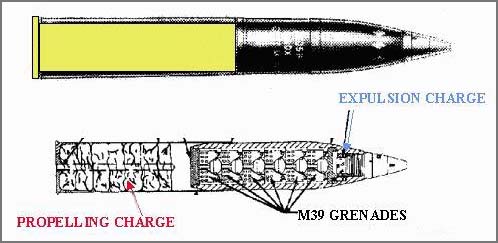
There is a fragmentation matrix inside the golf ball size plastic grenade body.

globalsecurity.org
The M444 projectile is an "Anti-Personnel Improved Conventional Munition" capable of delivering M39 anti-personnel grenades. During Operation DESERT STORM, these proved less than ideal due to the high number of unexploded grenades that would result at the target. One estimate places the number as high as 50%. Some commanders hesitated to employ the munitions if the unit might have to move through the area later.
